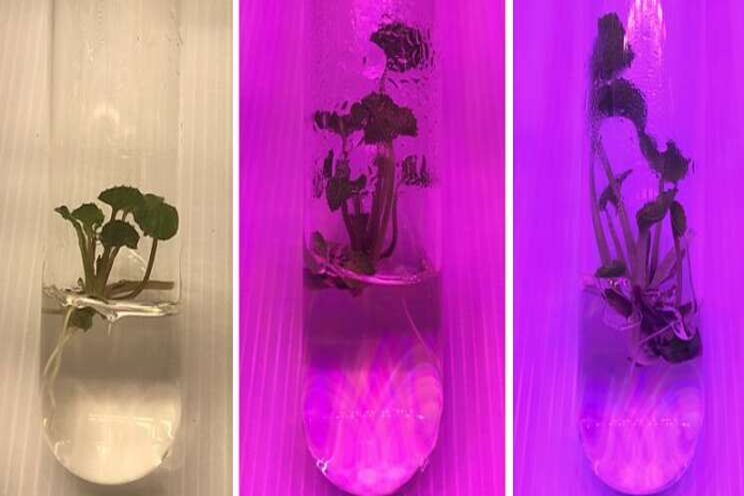Wasabi Japonica grown under grow lights
Added on 17 July 2020

The Opportunity
Wasabi is most commonly associated with Japanese food, where it is used as a unique spice and as a condiment on sushi, but many are now learning of its secondary metabolites that possess distinct health benefits including significant anti-cancer and antimicrobial properties. Unfortunately, few growers outside of Japan have successfully grown Wasabi Japonica commercially. This has led not only to a high global demand for fresh grown product, but also to an increasing amount of interest from commercial growers trying to tap into a market that now pays an estimated $325/Ł250 per kilo of rhizome.
"The "Hardest to Grow" plant in the world."
The Possibilities and the Challenges
Successful field cultivation is difficult because of the specific parameters required for growth over a relatively long harvest period of up to 2 years. Wasabi is also highly susceptible to pests and disease. Although resistant strains are available in Asia, the West is restricted to two main varieties: Mazuma and Daruma. Vegetative propagation can be successful for F1 generations, but thereafter, endogenous fungal infection leads to poor yields and major crop loss. Therefore, it is important to grow from clean stock produced under controlled environmental conditions.
A small startup in Scotland called The Functional Plant Company is currently working with LED grow lights from GE Current, a Daintree company to grow wasabi. The Functional Plant Company is using a variety of hydroponic and micropropagation techniques to produce plantlets from tissue culture through to acclimation and eventually full maturity. They are proving that light intensity and spectrum are equally important factors in establishing new cuticle and stomatal development. Their aim to prove this can become more efficient and faster by using GE LED battens as compared to natural daylight.
Finding Success with LED Grow Lights
Trials show the plants have established good root production using the Arize Lynk LED Grow Lights at 60umols/m2/s, although they noted the leaf canopy growth is slower and darker than when using TLEDs at equal intensity. The Functional Plant Company added that interesting results also arose when trying other spectrums of the Arize LED grow lights. They have noted a darker callus at higher light levels with high percentage of red light, while lower intensity prevents leaf burn and dehydration during early acclimation.
They concluded by noting that the Arize LED grow lights are very energy efficient, generating little heat—which is perfect for Wasabi as even a small temperature increase can cause wilt and plant loss.
Contact Hort Americas if you are looking to learn more about using the Current LED grow lights to produce crops grown in tissue culture and micropropagation facilities.
Source and Photo Courtesy of Urban Ag News
Source: Urban Ag News
More news
















